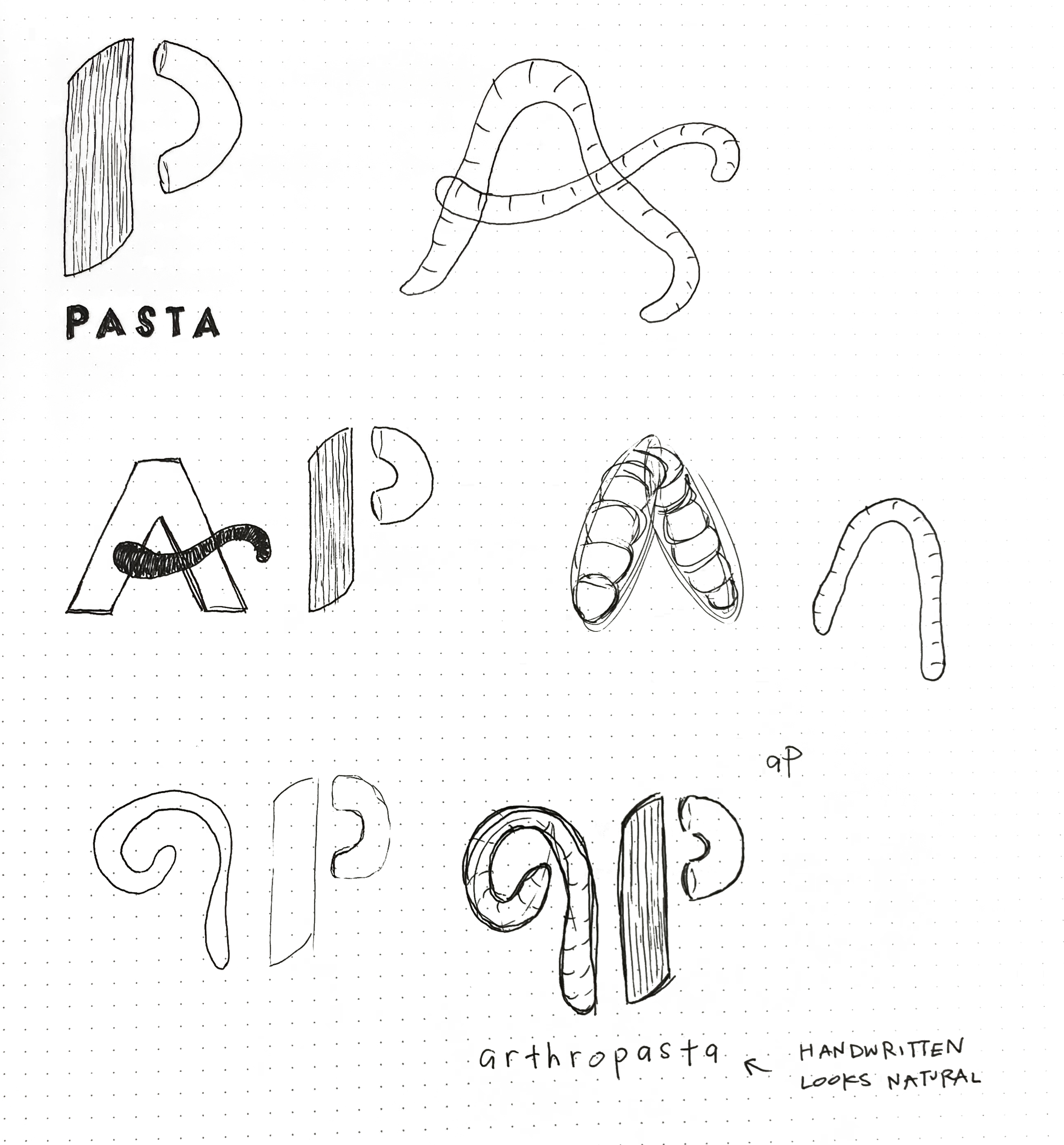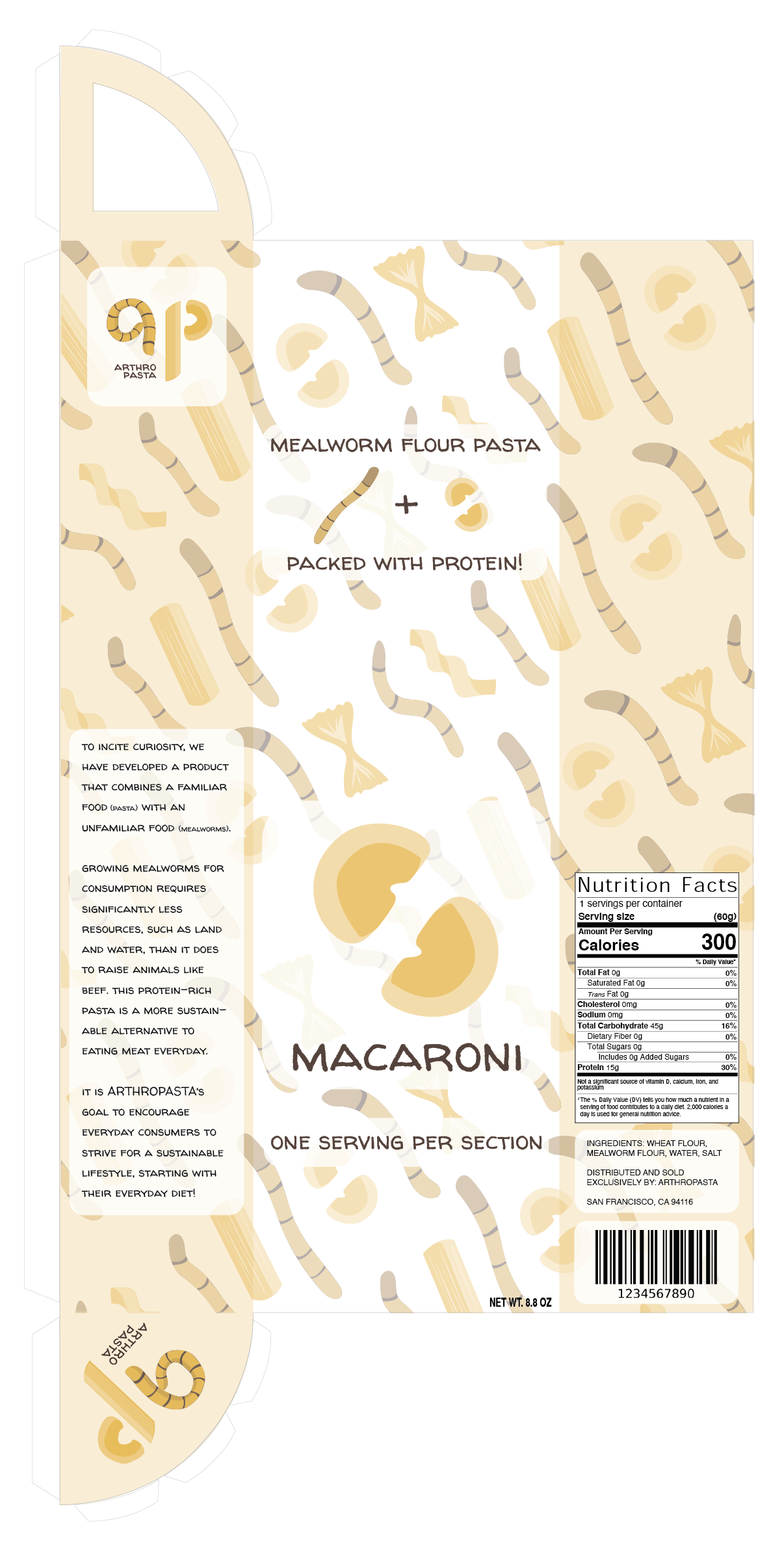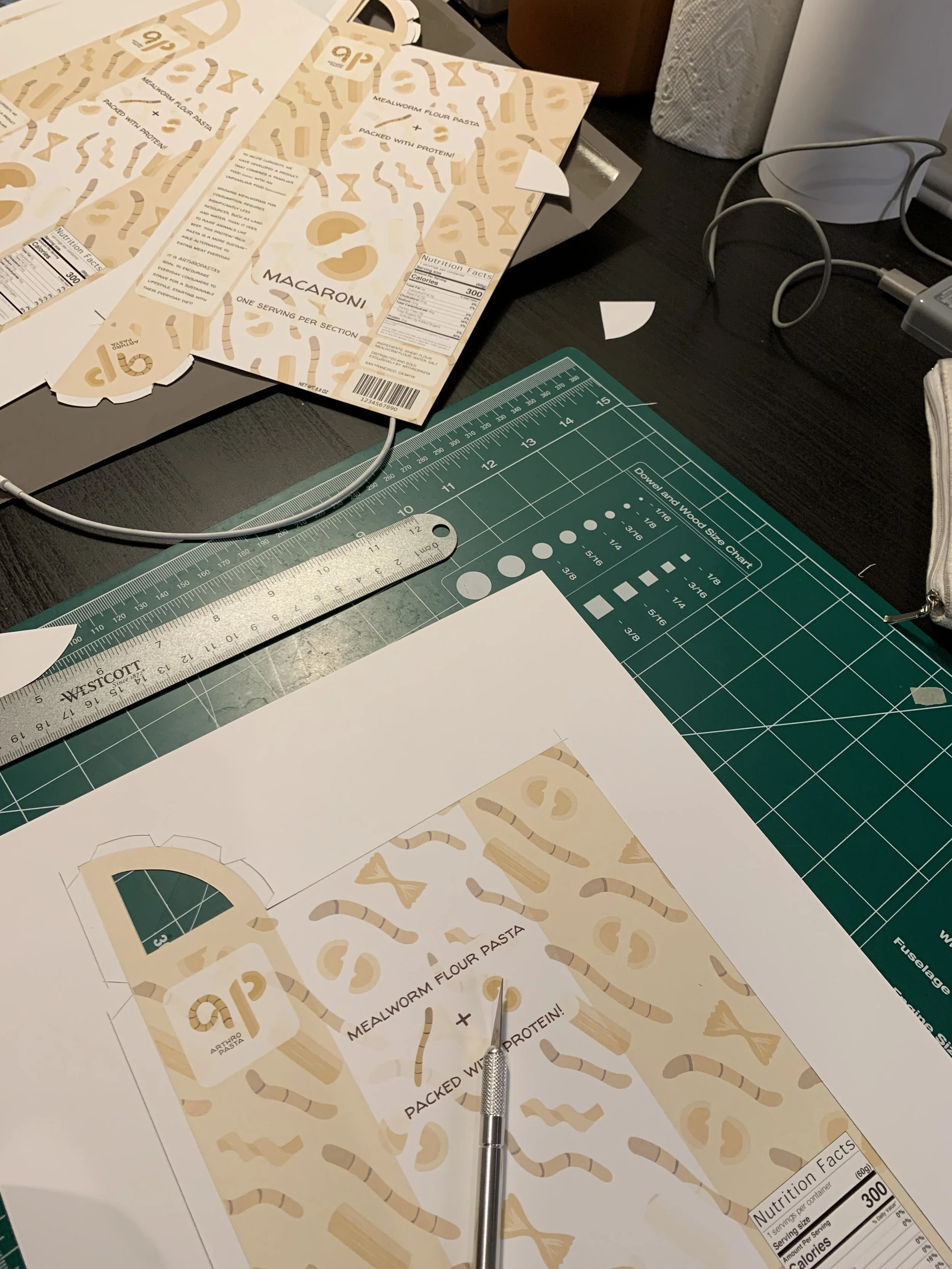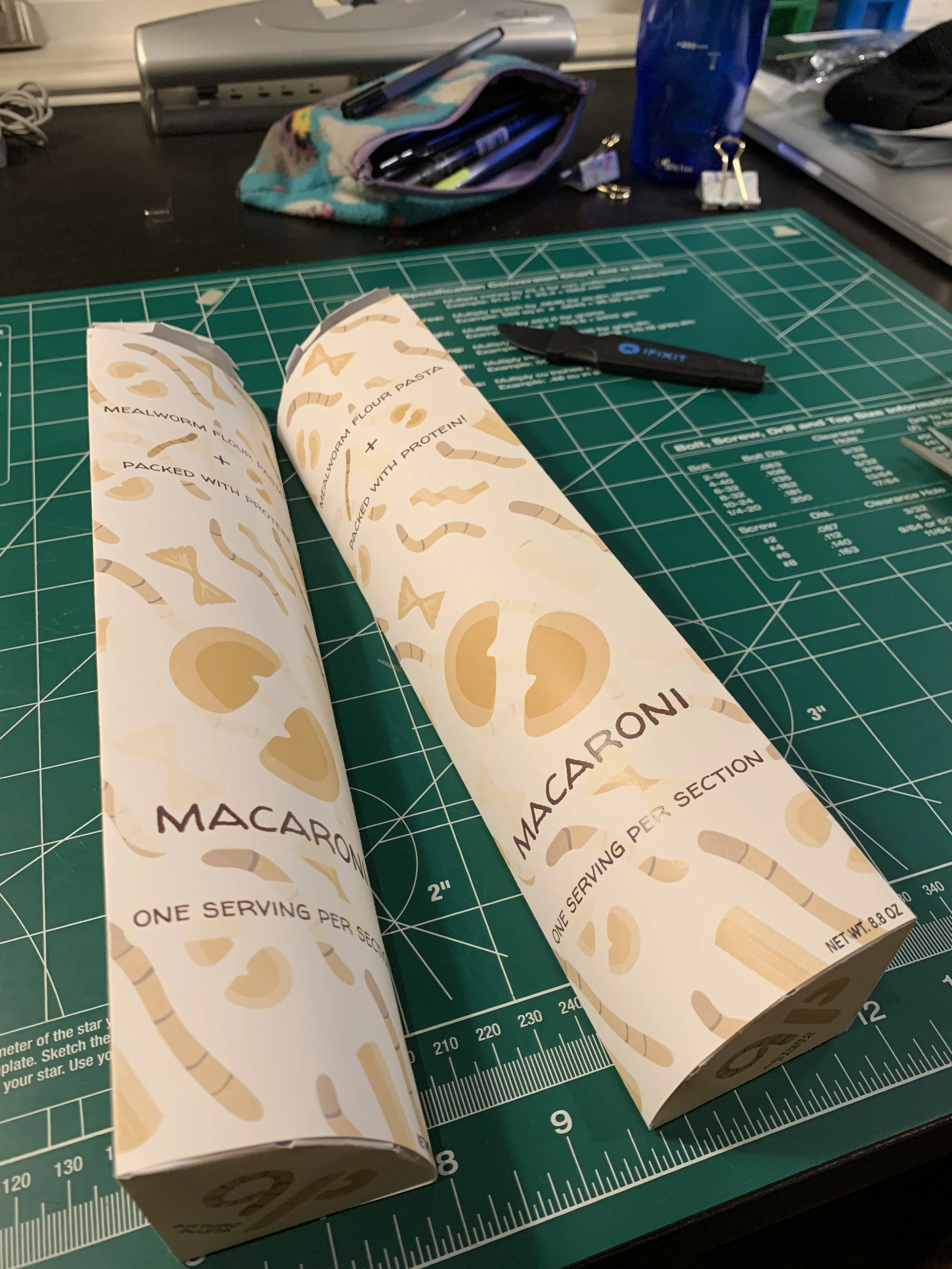* Arthropasta
* Arthropasta
environmental conscientiousness practiced through what we eat
the design process
Through a rapid ideation, sketching, and brainstorming session, inspiration for the brand’s visual identity is discovered.
The name “Arthropasta” is derived from two components: arthropoda and pasta. “Arthropoda” refers to the taxonomic category of invertebrate animals with an exoskeleton, segmented body, and paired jointed appendages.
The joining of “Arthro” + “pasta” again combines the familiar with the unfamiliar, calling back to the brand’s mission.
the concept
The logo is a combination of a mealworm and pasta shapes that create the letterforms “a” and “p” for “Arthropasta.”
the brand identity
It was important that the colors appeared appetizing, as consumers eat with their eyes when grocery shopping.
Retaining the imagery of mealworms and pasta to create an appealing marriage was key to brand recognition. It also helped with explanation of the product's narrative.
For marketing the product, the tagline “combining the familiar with the unfamiliar” is used to remain transparent about the makeup of the product.
The phrase itself sparks curiosity, which encourages consumers to learn more about the product. This curiosity hopefully inspires the consumer to actually try the pasta.
Biomimicry is the idea of employing principles, structures, and processes that occur in nature into design.
Honeycomb structures employ the function of modularity, which inspired the design for Arthropasta’s packaging.
The elements of modularity in this design are the individual quarter-packs that could be taken from the package’s whole. The amount of pasta in each quarter equates to a standard “serving size” to control portion sizes. The four quarters would be wrapped with an outer shell to hold all the pieces together.
For future growth, marketability, and flexibility, it is important to make the packaging adaptable for all pasta shapes. Packaging for spaghetti, a tall and thin pasta, may take a narrower shape than packaging for macaroni, which may have larger yet shorter quarters.
the product
* the final product
* the final product
Commercially-grown meat (beef, chicken, pork) requires immense amounts of land and water. Many countries, outside of the US, consume insects and other bugs for protein.
To promote more sustainable practices in food production in the US, marketing edible insects in an approachable way is important in order to de-stigmatize the consumption of bugs.
alternative protein sources
edible insects are
the future
combining the familiar with the unfamiliar
Arthropasta is an edible insect food product designed to encourage simple sustainable practices through one’s diet. Insects are a protein-rich food source that requires few resources to produce.
Arthropasta adds powdered mealworms, which has a naturally nutty flavor, to conventional pasta to create a protein-packed staple food.
Incorporating mealworm flour into pasta makes the mealworm almost undetectable, which could lessen the “fear factor” of edible insects.
Designing a brand that combines familiarity with unfamiliarity aims to encourage curious people to take the step towards normalizing insects in their everyday diet.












